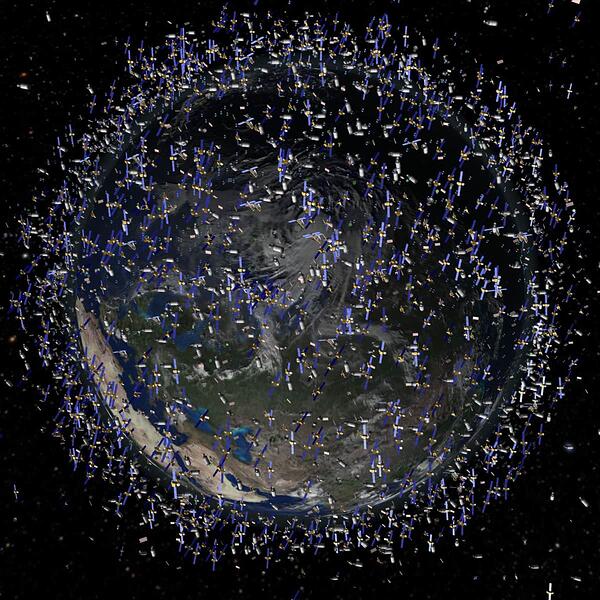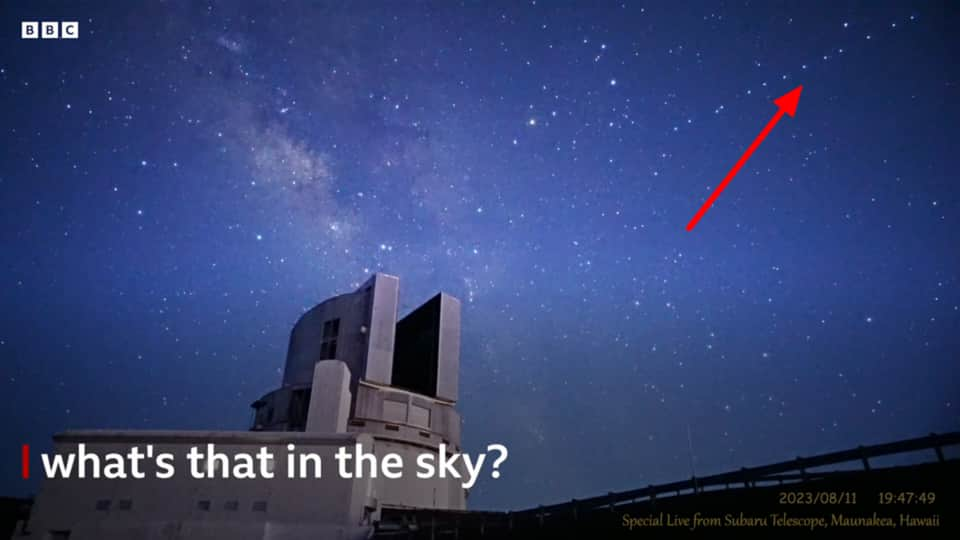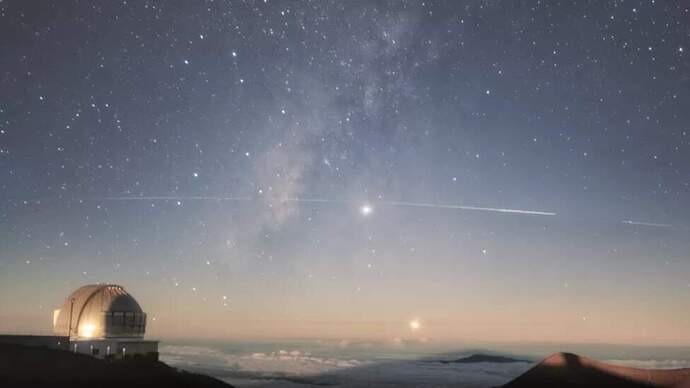Continuing the discussion from Satellite constellations - A threat to Earth's view of the Universe
(not to scale)
The Starlink constellation - a project by US company SpaceX - will start sending batches of 60 satellites into orbit every few weeks. This will mean about 1,500 satellites have been launched by the end of next year, and by the mid-2020s there could be a fleet of 12,000. UK company OneWeb are aiming for about 650 satellites - but this could rise to 2,000 if there is enough customer demand. While Amazon have a constellation of 3,200 spacecraft planned.
In May and November, Starlink sent 120 satellites into orbits below 500km. Stargazers were concerned when the spacecraft appeared as bright white flashes on their images. Scientists are worried that future “mega-constellations” of satellites could obscure images from optical telescopes and interfere with radio astronomy observations.
Dhara Patel, an astronomer at the Royal Observatory Greenwich said: “These satellites are about the size of a table, but they’re very reflective, and their panels reflect lots of the Sun’s light, which means that we can see them in images that we take with telescopes. These satellites are also big radiowave users… and that means they can interfere with the signals that astronomers using. So it also affects radio astronomy as well.”
So, a planned 15,000 satellites to add to the existing 100,000+ man-made objects already circling the Earth - it’s getting mighty crowded … :shock:
A meteor shower and a satellite 'train' caught on camera - BBC News (video)
While recording the annual Perseid meteor shower from Hawaii, this camera happened to capture a parade of satellites. The group of 15 dots moving through the sky are SpaceX’s Starlink satellites.
As of July 2023, there are 4,519 Starlink satellites in orbit, of which 4,487 are operational.
A “streak” of Starlink satellites:
Dhara Patel, an astronomer at the Royal Observatory Greenwich said: “These satellites are about the size of a table, but they’re very reflective, and their panels reflect lots of the Sun’s light, which means that we can see them in images that we take with telescopes. These satellites are also big radio wave users… and that means they can interfere with the signals that astronomers using. So it also affects radio astronomy as well.”
Dr Dave Clements, an astrophysicist from Imperial College London, believes the satellites could have a real impact on observations. "They present a foreground between what we’re observing from the Earth and the rest of the Universe. So they get in the way of everything. “And you’ll miss whatever is behind them, whether that’s a nearby potentially hazardous asteroid or the most distant Quasar in the Universe.”
He said it would be particularly troublesome for telescopes taking large surveys of the sky, such as the future Large Synoptic Survey Telescope (LSST) in Chile.
He explained: “What we want to do with LSST and other telescopes is to make a real-time motion picture of how the sky is changing. Now we have these satellites that interrupt observations, and it’s like someone’s walking around firing a flashbulb every now and again.”
Inevitably, as the pursuit of profit takes precedence over the pursuit of knowledge, the skies of Earth will be littered with thousands, even millions, of metallic man-made objects … ![]()






